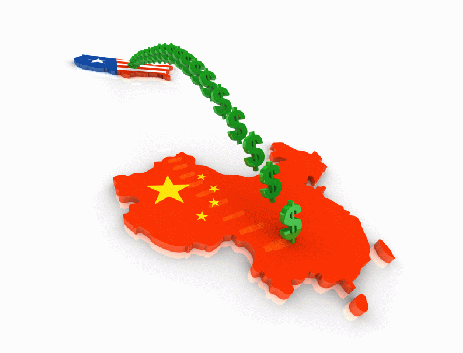 You hear it all the time, one of the most frequently voiced excuses for Western countries failing to radically cut carbon dioxide emissions: Taking any such action would hand a massive competitive advantage to fast-industrializing China.
You hear it all the time, one of the most frequently voiced excuses for Western countries failing to radically cut carbon dioxide emissions: Taking any such action would hand a massive competitive advantage to fast-industrializing China.
Yet evidence is piling up that the very opposite is the case. The main challenge from the world’s new industrial superpower is not that it will continue to use the dirty, old technologies of the past, but that it will come to dominate the new, clean, green ones of the future.
As developed nations fail to put an adequate price on carbon, and thus to stimulate clean-technology development themselves, they risk handing market supremacy to the rival they most fear. Indeed, it could even be hypothesized that China’s blocking of agreement on rich-country emission targets in Copenhagen was intended to hold back the development of cleantech by its Western rivals.
Visitor after distinguished visitor to the world’s most populous country returns home shaken, if not stirred, by the speed and determination with which it is adopting these technologies, especially in renewable energy. David Sandalow, the U.S. assistant secretary of energy for policy and international affairs — a longtime expert in the field, both in and out of government, who has trekked across the Pacific five times since last summer — says, “China’s investment in clean energy is extraordinary. Unless the U.S. makes investments, we are not competitive in the cleantech sector in the years and decades to come.”
New York Times columnist Thomas Friedman wrote from China earlier this month that he was increasingly convinced that the most important development of recent years would prove to be “not the Great Recession, but China’s Green Leap Forward.” He, too, warned that unless the United States rapidly caught up, “we are going to gradually cede this industry to Beijing and the good jobs and energy security that would go with it.”
Certainly China’s commitment and growth in this area are breathtaking. It already boasts a thousand solar water heater manufacturers providing some 600,000 jobs. One in every 10 homes in the giant country has them installed, making up two-thirds of the entire world’s solar hot water capacity; by 2030, some estimates suggest, half of all the country’s households could have them.
Solar electricity is not far behind. In 2005, China produced a relatively tiny 100 megawatts of solar cells. Two years later, it was leading the world with 1,088 MW. This year, it is predicted to exceed 5,000 MW, a third of the world’s total — and it’s expected to go on expanding to reach 10,000 MW in just five years time. Solar thermal power is also on the rise: 2,000 MW of solar thermal power stations are expected to come online over the next decade, with a dramatic increase in the years after that.
At the same time, installed wind-power capacity has been doubling annually: China is expected to meet its original 30,000 MW target for 2020 in two years time, and last year it vastly increased the target to an ambitious 100,000 MW.
Indeed, the wind-power expansion reveals something of China’s ruthless determination to lead the world in these new low-carbon industries. In 2003, just before the headlong growth of the industry began, the country heavily restricted imports, requiring its wind farms to source 70 percent of its parts from the domestic market. The restriction was only lifted last year, by which time home production dominated the business.
And an even more ominous development seems to be gathering pace. China is responsible for 97 percent of the world’s production of rare earth elements or metals, vital for many cleantech products from wind turbines to hybrid-car batteries, fiber optics to low-energy light bulbs. But over the last seven years, it has reduced the quantity of them available for export by 40 percent, and before long may be using all of its production to feed domestic demand.
Other countries — including the United States, South Africa, and Greenland — have significant deposits of rare earth metals, but are years away from properly exploiting them. By increasingly restricting supplies, China could strangle overseas clean industries while boosting its own.
The U.S. administration, at least, is alive to the danger of China dominating the cleantech market. Last April, President Obama warned, “The nation that leads the world in 21st-century clean energy will be the nation that leads in the 21st-century global economy.” The tens of billions of dollars in his stimulus package devoted to renewables is an attempt to gain that lead for the United States.
In fact, there may be an even more productive course: partnership with China. Whereas China can make things much more cheaply than the United States — and open factories much faster — it is, as yet, still far behind the U.S. in innovation and venture capital. There is an opportunity to come together to benefit both countries — and the world.
But seizing that opportunity would require the U.S., as well as other Western countries, to take serious action to raise the price of carbon and spark a wave of new technological innovation, rather than ceding the field to China while falsely professing to be protecting their economies from it.



